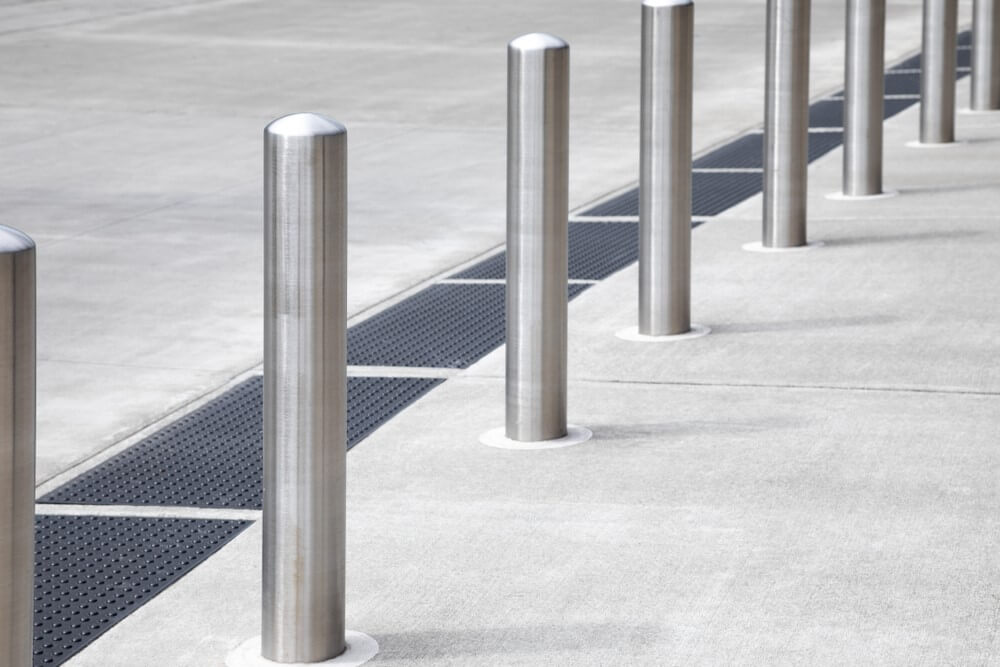
A bollard is a solid, short, vertical post. The word originally referred to a post on a ship or dock used primarily to tie-up boats, but is now also used to describe posts installed to control road traffic and prevent vehicle-ramming attacks.
Steel bollards are ideal for safety and security purposes. They protect people and places against vehicle impact in a subtle way. They block motor vehicles without slowing foot-traffic. So basically, they function as protective barriers and boundary markers.
Bollards come in a wide selection of styles and shapes to visually stand out in their locations. Security bollards may have decorative elements or are installed to complement the landscape, but their primary function is to resist impact forces.
What are steel bollards made of?
Depending on their purpose, bollards are made from a variety of materials. The most common materials are metal, stone, cement, or plastic. Steel is also among the most common materials for bollards.
For Steel Bollards, of course, they are made of steel. Steel is a light iron alloy which can handle resistance more than cast or ductile iron. Security bollards are usually made from structural grade steel filled with concrete while decorative bollards are often made from standard steel.
Sometimes, steel bollards are made of stainless steel. Stainless steel bollards have a sleek contemporary look and are usually installed in places where the weather can be a problem. These steel bollards have a high level of weather resistance. The metal can be left exposed in its eminent silver-grey or can be powder-coated with colour to complement the surroundings.
How tall should a steel bollard be?
Steel Bollards come in different sizes depending on their purpose and the area where they’ll be installed. Steel bollards typically range from .8 to 1.2 metres in height. The average height of these bollards is one metre. The height of the steel bollards is effective in stopping vehicles from passing through to constrained areas since most vehicles are about one and a half metres tall. This also means that when someone attempts to bypass a bollard, that person will significantly damage his vehicle.
The wider a bollard, the more weight it can withstand. The reason why they are not smaller is, at one meter, they are an effective visual warning before ever having to be a physical warning. Don’t be fooled though, the part you see is not always all there is to the bollard. Like icebergs, embedded bollards are installed underneath the surface of the ground. Because of this method, the steel bollards are even stronger and more durable.
Are steel bollards removable?
Steel Bollards may be hinged at ground level so that they can be folded flat to allow vehicles to drive over them. In these cases, they are generally fitted with padlocks at the base, to prevent being lowered without proper consent. Removable bollards may be built into a permanent metal ground socket, from which they can be detached entirely to allow traffic to pass. A polypropylene ground socket is also available, which protects the paving and foundations from damage when the bollard is struck. This design uses a self-locking taper to enable bollards to be easily detached and transferred.